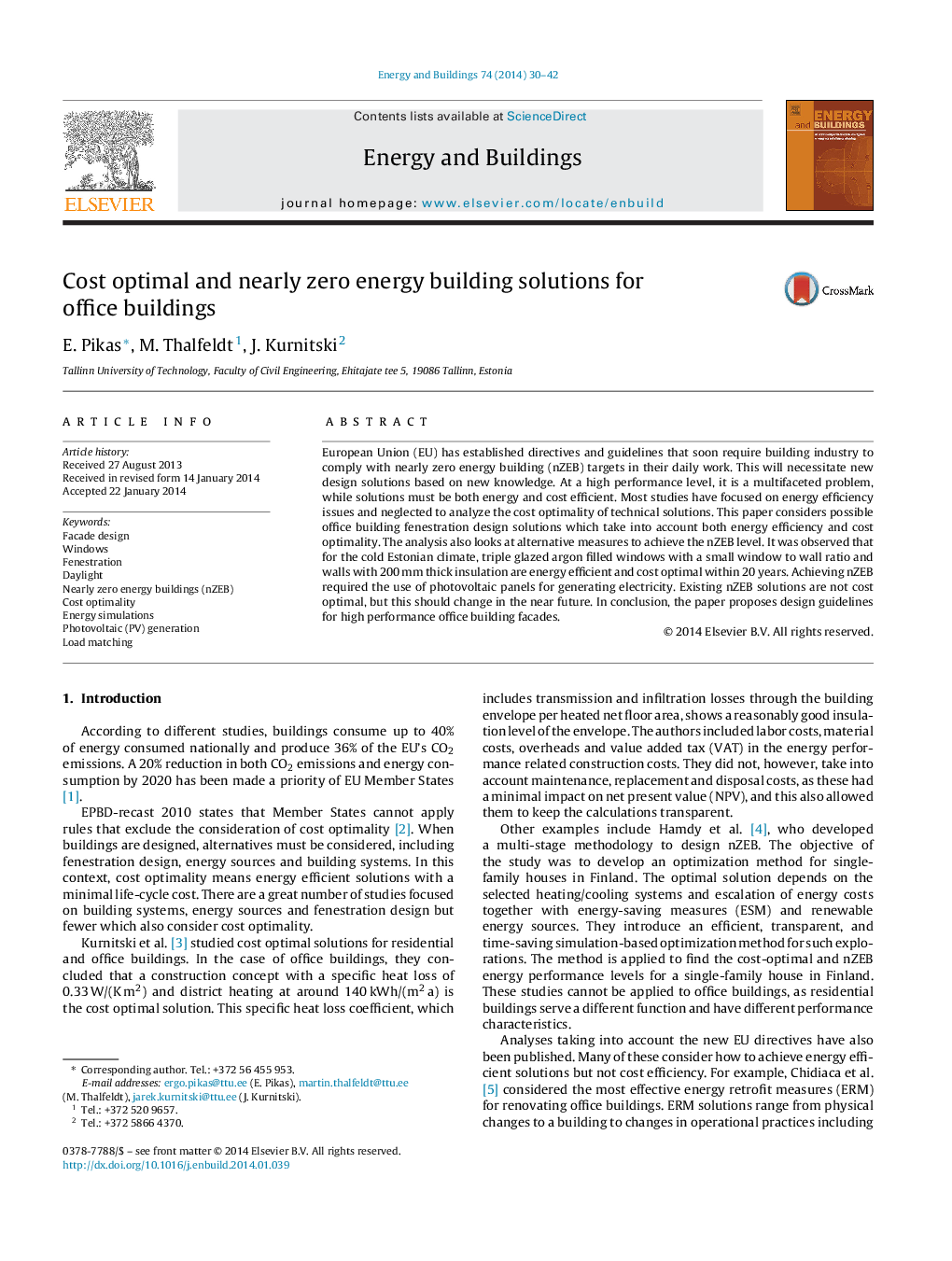| Article ID | Journal | Published Year | Pages | File Type |
|---|---|---|---|---|
| 262979 | Energy and Buildings | 2014 | 13 Pages |
•Cost effectiveness of high performance façade solutions was analysed.•Smaller triple glazing and 200 mm insulation was cost optimal in a cold climate.•Most economic nZEB was achieved with cost optimal façade and photovoltaic panels.•One step better energy performance was turned to cost optimal in couple of years.•Higher energy prices and reduced investment costs can make nZEB cost optimal.
European Union (EU) has established directives and guidelines that soon require building industry to comply with nearly zero energy building (nZEB) targets in their daily work. This will necessitate new design solutions based on new knowledge. At a high performance level, it is a multifaceted problem, while solutions must be both energy and cost efficient. Most studies have focused on energy efficiency issues and neglected to analyze the cost optimality of technical solutions. This paper considers possible office building fenestration design solutions which take into account both energy efficiency and cost optimality. The analysis also looks at alternative measures to achieve the nZEB level. It was observed that for the cold Estonian climate, triple glazed argon filled windows with a small window to wall ratio and walls with 200 mm thick insulation are energy efficient and cost optimal within 20 years. Achieving nZEB required the use of photovoltaic panels for generating electricity. Existing nZEB solutions are not cost optimal, but this should change in the near future. In conclusion, the paper proposes design guidelines for high performance office building facades.
